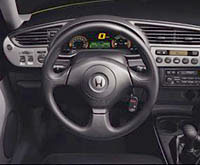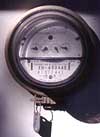This column is not a Honda ad, though it will start off sounding like one. This is an ad for feedback.
I’ve had a Honda Insight, a gas-electric hybrid car, for less than a month. It has taught me a whole new way of driving, thanks to feedback from its instrument panel.

An Insight instrument panel could become your new best friend.
An indicator flashes a string of orange lights when the nickel-hydride batteries kick in to help the little gas engine accelerate or pull uphill. When I decelerate or go downhill, green lights show the gas engine recharging the batteries. Light brake pressure sends the meter to a green maximum. So now I avoid sudden stops. I try to glide into stoplights, braking gently from a long distance away.
There are three odometer/mileage meters. One I reset as I start each trip. One I reset when I fill up with gas. The third keeps track of miles and mileage over the life of the car. At the moment that third meter reads 1,600 miles at an average of 56 miles per gallon. The latter number is rising as the car teaches me to drive more efficiently. The last fill-up carried me 660 miles at an average 71 miles per gallon. Some days I can get over 80 mpg on my commute to Dartmouth.
The most effective feedback comes from the instantaneous mileage meter, which zooms up and down according to my gas consumption at every minute. Long uphill in third gear: ouch! Under 25 mpg. Cruising on the flat: not bad, 75 mpg — maybe if I ease off the gas a bit I can get it up to 80. Long downhill: shazam! Off the scale at over 150!
This meter runs my life, or at least my driving. No more jackrabbit stops or starts. No way, when I see the result on the mileage meter, do I gun my engine. I find myself going slower than I’m used to. I conform almost perfectly to speed limits. I pass lurking police cars without a twinge of apprehension — now there’s a new experience! My commute takes about one minute longer, a small price to pay for cutting my gas cost in half.
The habit I find hardest to shake is driving according to the urge of the driver behind me. When someone crowds me impatiently, I used to speed up — but now I see my mileage drop when I do. For awhile I speeded up anyway. Then I started thinking, “Why should I contribute to the frying of the planet just because you’re in a hurry? If you stay at the speed I’m going, both of us will use less gas.”
So now I remain happily oblivious to frustration behind me. I do try to stick to the interstate, so folks can pass me, or take two-lane roads at less busy times. I notice, to my surprise, that I’m not the only speed-limit-obeying slowpoke out there. I never quite registered the others before; I was too busy leaving them in the dust.
Whatever you think of my driving, my point has to do with the power of feedback. Three weeks of information I never had before have changed 40 years of ingrained driving habits. I didn’t have to be coerced or rewarded; I didn’t have to change my values. I just had to see how my actions did and did not conform to my values.
Which brings me to the Viridian Meter. There is a crazy website run by science fiction writer Bruce Sterling and dedicated to the proposition that industrial design needs to be more environmentally conscious and less ugly. The site features catalog ads for imaginary products that Sterling and his friends think someone should invent. One of them is the Viridian Meter.

Rid your home of this eyesore!
“One of the most offensive artifacts of the twentieth century is the standard household electricity meter. This ugly gizmo clings like a barnacle to the outside of your home, readable only by functionaries. Clumsily painted in battleship gray, this network spy device features creepy, illegible little clock-dials under an ungainly glass dome. Look a bit closer and this user-hostile interface deliberately insults you with a hateful anti-theft warning and a foul little lockbox.
“This crass device is designed to leave you in stellar ignorance of your own energy usage. It publicly brands you as a helpless peon, a technically illiterate source of cash for remote, uncaring utility lords.
“But today, thanks to the Viridian Electrical Meter, the tables are turned. The Viridian Meter is not some utility spy device, but a user-owned art object!”
I will spare you the description of the Viridian Meter, because my institute is sponsoring a contest for the design of an actual one and I don’t want to cramp your creativity. The ideal meter would be so beautiful or dynamic or fascinating that you would want it in your living room. You would watch it rise as someone turns on an electric hairdryer. You would cheer as more efficient lightbulbs cool its angry red, say, to soothing green. Maybe it would read in dollars instead of kilowatt-hours, so you could watch your electric space heater dribble your paycheck away. Maybe it would show less acid rain falling on New England or less greenhouse gas pouring into the atmosphere as you switch off lights in empty rooms.
Whatever a Viridian Meter would look like, I want one. I want it to teach me, as my new car is teaching me, the actual effects of my decisions. I want another meter to register my water use and another the fuel flows I engender, as I open doors, wash dishes, caulk windows, take long showers, or buy an efficient washing machine. I want those meters in my kitchen or on my front door, right in my face, and I want them posted on a website so everyone can see them.
I suspect that all it would take would be some well-placed user-friendly feedback to change the world.


